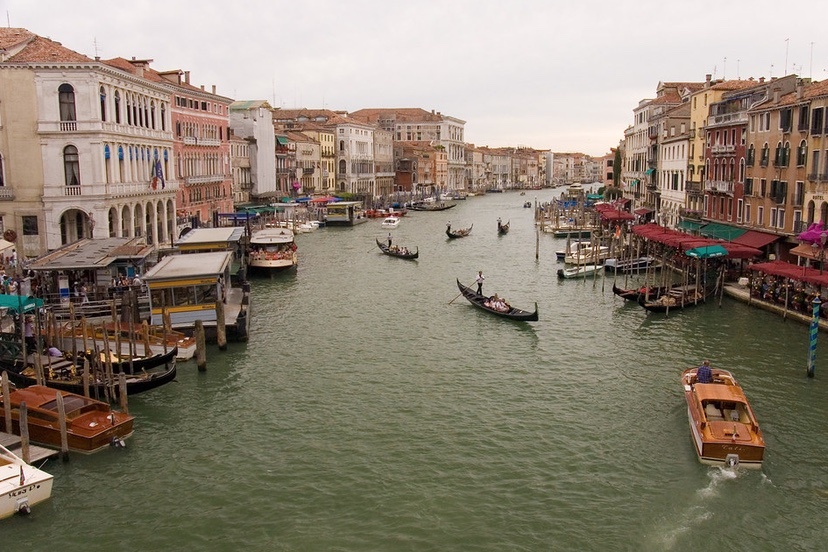“After 50 years of debate over what to do about mass tourism, we are finally doing something about it,” said City Councilor Simone Venturini.
— from ‘Venice, crowded for Carnival, tries to turn back the clock on overtourism’ by Anthony Faiola and Stefano Pitrelli, in the Washington Post, February 13, 2024.
I lived in Venice for a couple of month, between my sophomore and junior years in college.
Venice, California, that is…
…not Venice, Italy.
I’ve never visited Venice, Italy, and at the rate things are going, I probably never will.
And apparently, they don’t want me to visit.
According to media reports, the “pandemic-era reprieve has ended” for Venice, Italy… where residents either love or loathe the tourists who drop $3 billion annually, but leave behind 70,000 tons of trash and urine-sprayed streets, and take the occasional nighttime joyride in a commandeered gondola.
From a recent Washington Post article:
A 29-day test, set to start on April 25 after a series of delays, will require day-trippers to book and pay admission to set foot on Venice’s core island. City officials note that tourists worldwide have long paid entry fees for museums, archaeological sites, even churches, with more-popular sites turning to visitor caps or time slots. This system, they say, is a mild version of those.
Simply put, you will have to buy a ticket, to visit Venice.
If deemed a success, the new fees — initially set at 5 euros, equal to $5.38 — would continue to apply on certain days, officials say, especially in high season, when tourists can outnumber locals by 3 to 1. Overnight visitors, who already pay a tourist tax at hotels, would be exempt.
Another experimental measure, starting in August, will limit tour groups to 25 people…
I can’t say for sure, but I think tourists in Pagosa sometimes outnumber us locals by 3-to-1. I could definitely get behind an experimental measure to limit groups to 25 people. Then maybe I could get a seat in a restaurant without a 30-minute wait.
The pandemic’s halt to global tourism dented wallets in Venice, says the Washington Post, “but it also provided Venetians with a dreamy glimpse of a world in which their city was once again their own.”
Unfortunately, when the pandemic dented the wallets in Venice, the tourists ended up visiting Pagosa Springs instead. Some local wallets were fattened as a result. (Not my own wallet, however.) The town was no longer our own.
Where was that 25-person limit when we really needed it?
The editor of the magazine Ytali, Guido Moltedo, blames the bulk of Venice overtourism on ‘morti e fuggi’ tourism. By which he meant, ‘day-trippers’ who avoid spending the night in the city.
But the phrase ‘morti e fuggi’ translates more accurately as ‘hit and run’.
We have some of that in Pagosa… but a more common type of tourist family checks into a timeshare at Wyndham Resorts, and stays for a full week. That is to say, our tourists here are more like ‘morti e soggiornare’. Which translates as ‘hit and stay too long.’
If we had a way to kick people out of town by 10pm, that would be fine by me.
Turnstiles have been installed to limit the flow of tourists in certain areas of Venice. Another idea I could get behind.
But according to Guido Moltedo, “a stronger political resolve to restore artisan businesses and make Venice more affordable for locals is the only way it can become a more sustainable destination.”
Personally, I don’t want a “more sustainable destination.”
I’m looking for a “more sustainable home town.”
Underrated writer Louis Cannon grew up in the vast American West, although his ex-wife, given the slightest opportunity, will deny that he ever grew up at all. You can read more stories on his Substack account.

